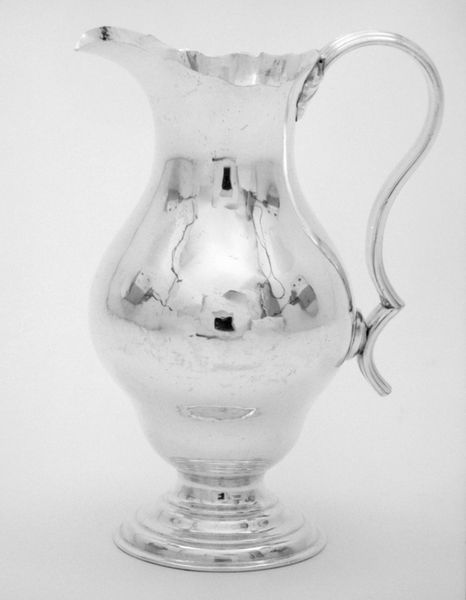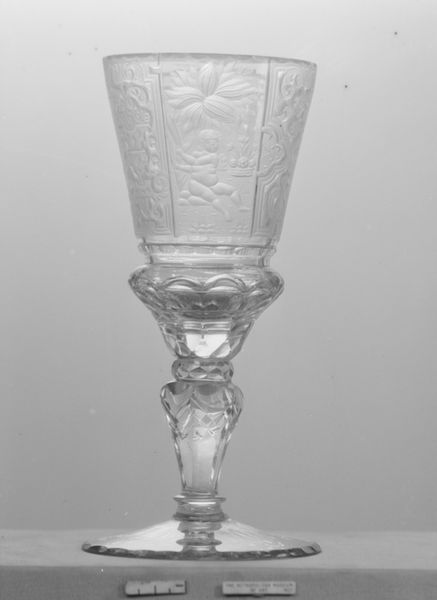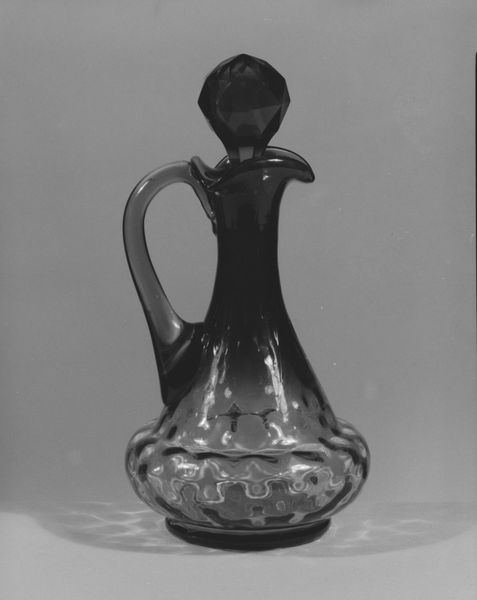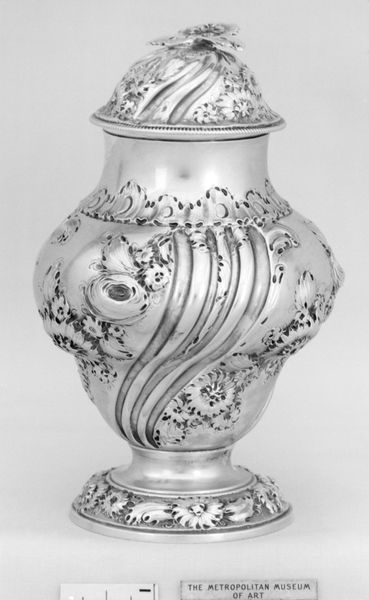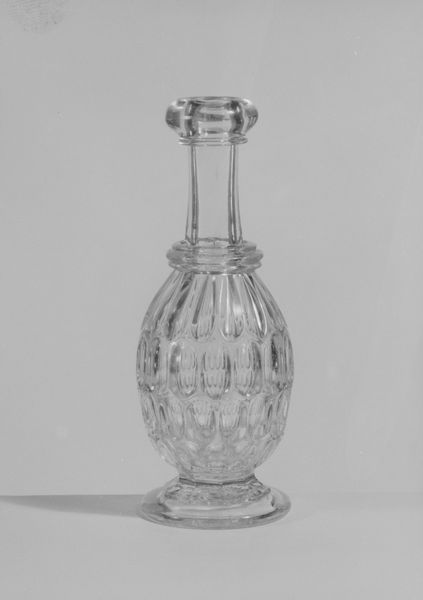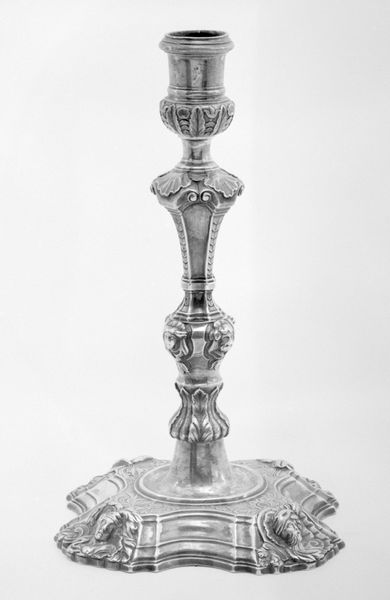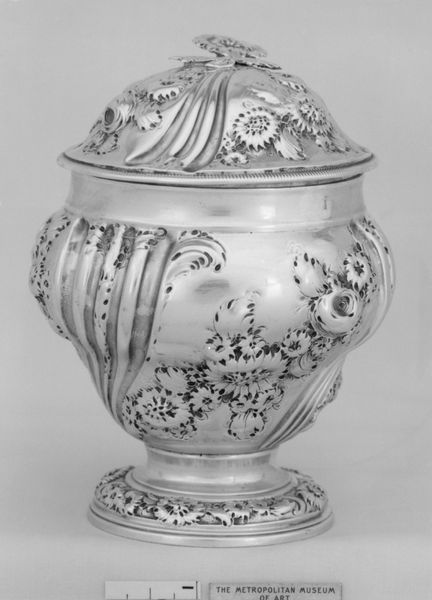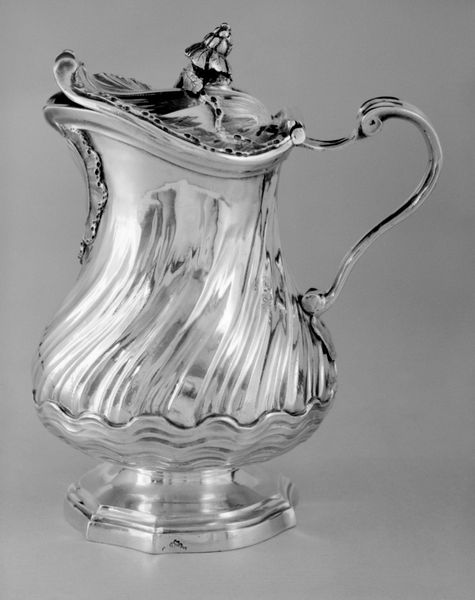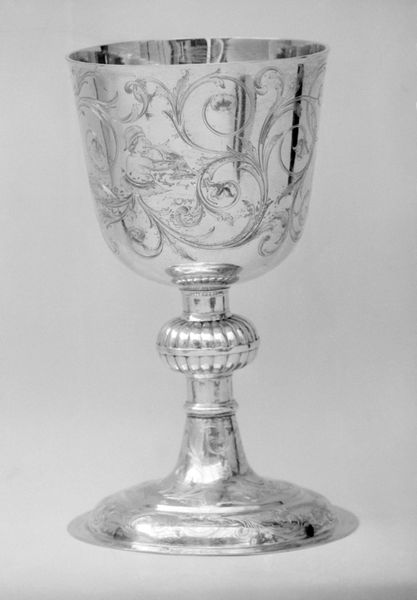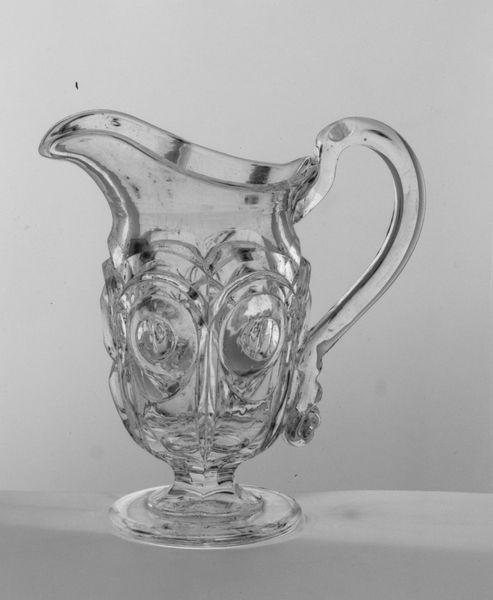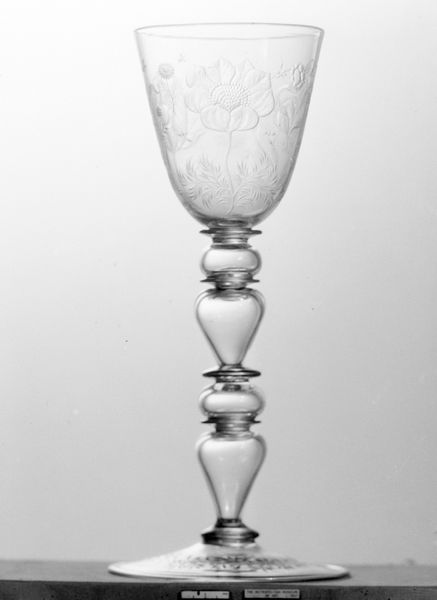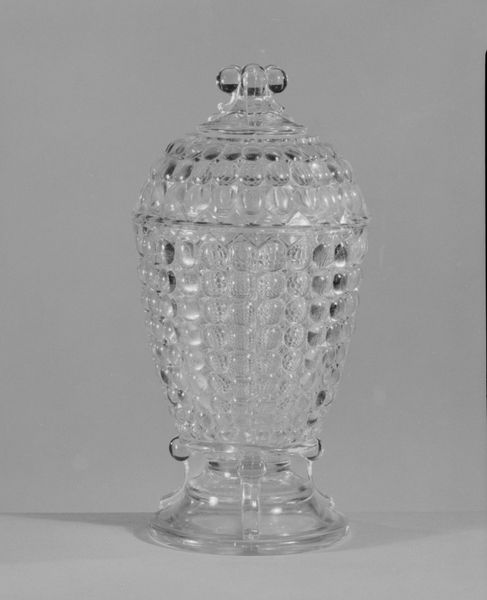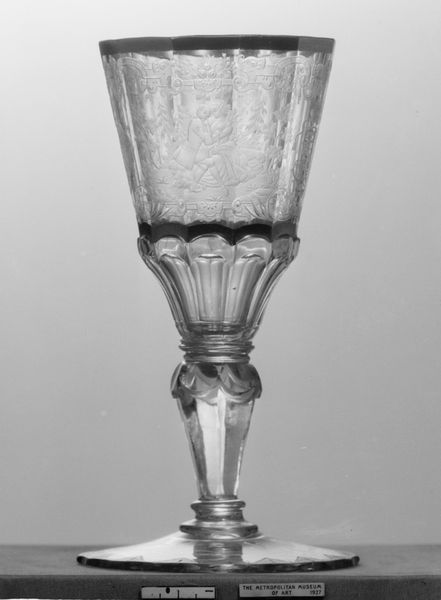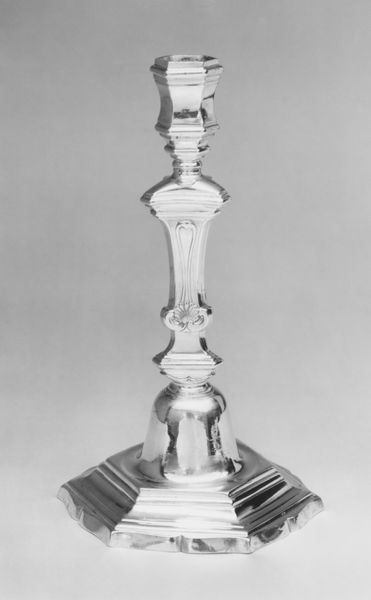
Dimensions: H. with stopper 23.5 cm
Copyright: Public Domain
Curator: This elegantly crafted piece, created by Antonio Salviati between 1875 and 1900, is titled "Cruet and Stopper". It is currently housed here at the Metropolitan Museum of Art. Editor: Its asymmetrical shape is immediately striking, wouldn't you agree? It almost appears unstable, but also incredibly graceful, like a dancer caught mid-motion. The glass has a muted grey coloring here. Curator: Exactly. This cruet speaks volumes about the late 19th-century Venetian glassmaking revival. Salviati was instrumental in revitalizing these techniques, particularly by incorporating Renaissance and Art Nouveau motifs that made Venice famous for glass production. The addition of leaves and vines on the exterior demonstrate how Salviati embraced sculptural forms in glass to mimic decorative embellishments one might find in pottery. Editor: Focusing on those forms, you can really read its visual language, which tells its history! The twisting handle, almost vine-like, flows naturally to the rim, while the leaves and berries give texture to an otherwise smooth surface. Curator: Salviati's revival also addressed a market eager for luxury goods that connected to artisanal and historical processes. These pieces became showpieces for display, which indicates their cultural value. The labour behind this is considerable. Glass blowing demands an exacting approach, let alone constructing it to appear like this. Editor: Precisely. The formal arrangement—the interplay between curves and sharp edges, the repetition of forms creates such an extravagant expression. How do you think contemporary consumers perceive it, given our culture is more focused on streamlining? Curator: Good question! Today, this work allows us to understand the socio-economic contexts from which these beautiful yet functional wares emerge and how this impacts culture across regions and generations. I imagine this piece invites reflection on shifting global trade systems, even colonialism. Editor: Agreed! I leave our visitors here today thinking about glass as something beyond a mere drinking vessel or decorative object, as this has a life of its own, not only from an aesthetic perspective but a sociocultural one too. Curator: Yes, from glassblowing processes to Art Nouveau design elements to modern takes on how this type of decorative art should function, this small but complex piece offers insight to how the late 19th century has influenced present day.
Comments
No comments
Be the first to comment and join the conversation on the ultimate creative platform.
